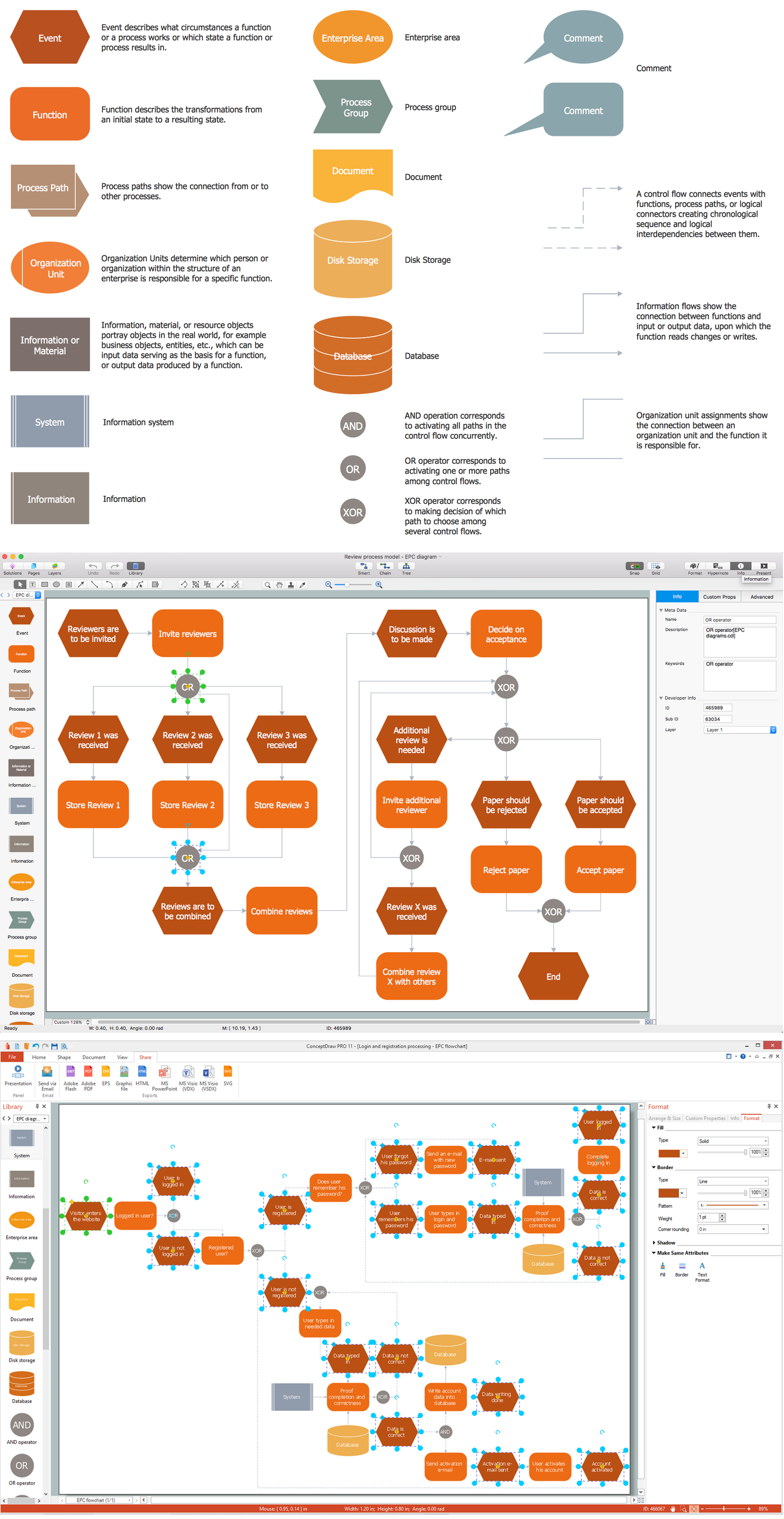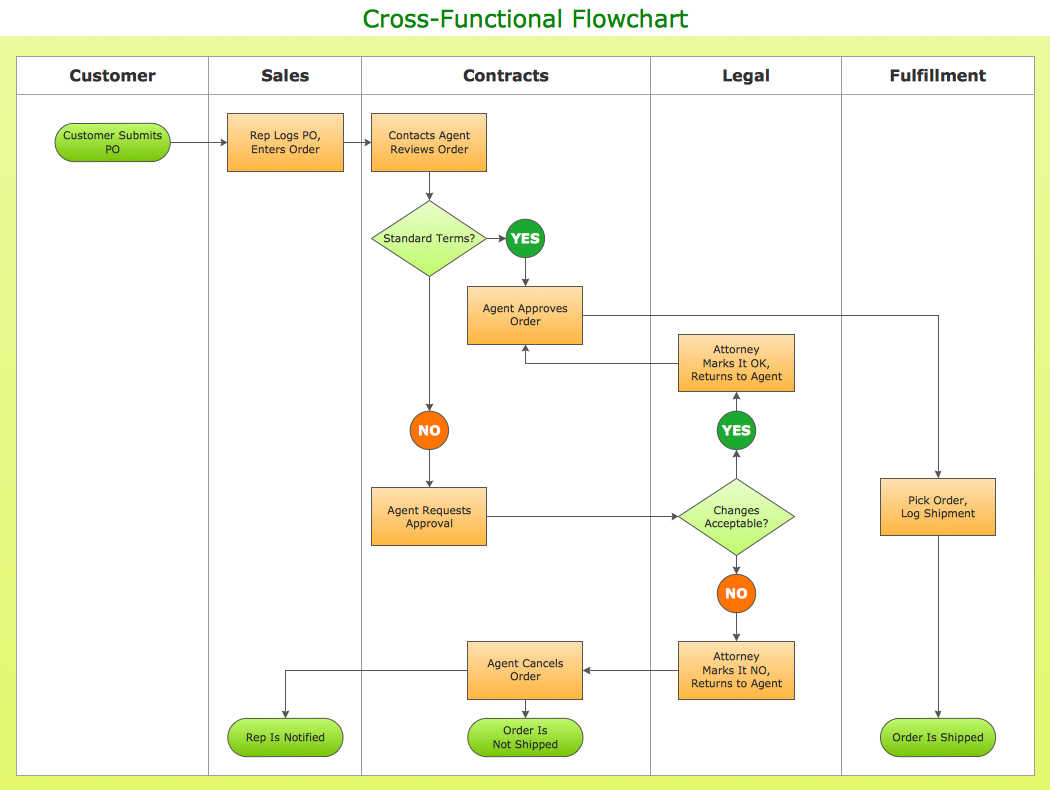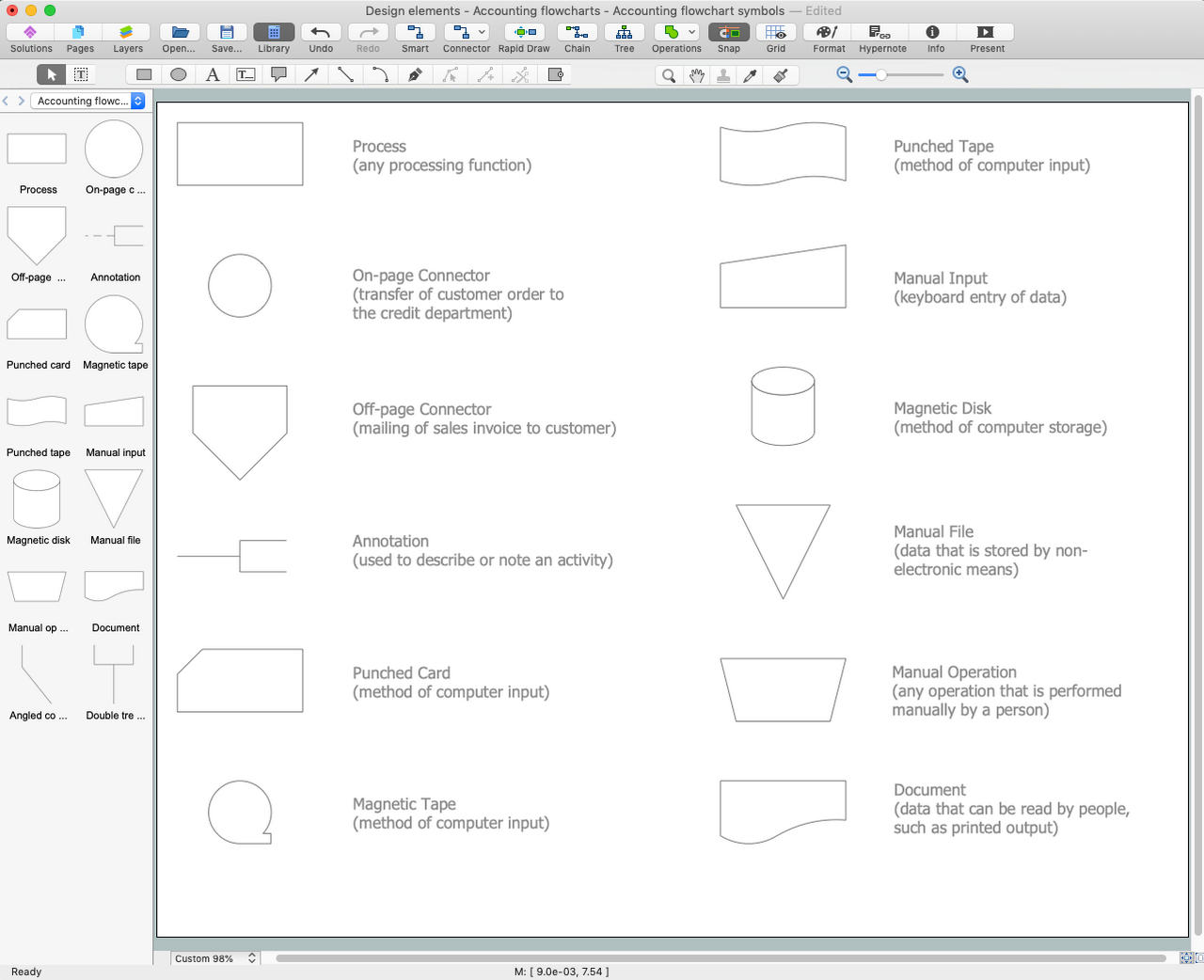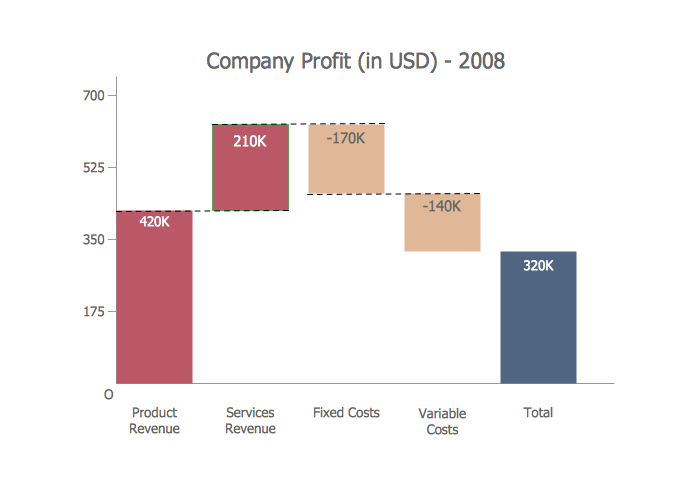Business process Flow Chart —
Event-Driven Process chain (EPC) diagrams
Event-Driven Process Chain (EPC)
A flowchart called “event-driven process chain” (also known as simply “EPC”) is used for modelling the business processes, configuring a so-called “enterprise resource planning” implementation as well as for improving the business processes. The usage for controlling the work share, including controlling the instances of the autonomous workflows, is possible in so-called “workflow management”, but they are not yet implemented.
The “event-driven process chain” method was developed by Mr. Scheer in the early 1990s for laying out the business process workflows. This method can be used by many different companies for the purpose of modelling, analyzing and redesigning any business processes going on within this business field of activity. Both events and functions mentioned in such “event-driven process chain” graph provide many different connectors, letting the business processes execute in an alternative and parallel way. There are no restrictions appearing to exist on the structures of EPCs, but non-trivial structures can involve parallelism and have ill-defined execution semantics. Once they are as we described, then they resemble “UML activity diagrams”.
There are many elements which are used in the “event-driven process chain diagrams”, which are “events” (passive elements that describe under what circumstances a function or a process works or which state a function or a process results in), “functions” (active elements that model the tasks or the activities within one company and also describe the transformations from an initial state to a resulting state), “Organization units” (determine which organization within the structure is responsible for which function), “logical connectors” (show the logical relationships between elements in the control flow) and many other.
There are in total three kinds of logical relationships, which are defined in event-driven process chains. One of these relationships is called “Branch and Merge”: it is used when there is a need to make a decision of which path to choose among a few control flows. A branch may have one control flow (which is usually incoming) as well as two or more so-called “outgoing” control flows. In case this condition is fulfilled, a branch activates only one of the “outgoing” control flows and it also deactivates the others. The counterpart of a branch is a “merge”, which may have two or more “incoming” flows and one “outgoing” control flow.
Another kind of relationships within a logical structure can be “Fork and Join” correspond which is meant to be used for activating all paths in the control flow. A “fork” may have only one incoming control flow as well as two or more outgoing control flows. Once the condition within “Fork and Join” correspond relationship is fulfilled, then a “fork” activates all of the “outgoing control flows” which go in parallel to each other. A join may have two or more “incoming control flows” as well as one “outgoing control flow”. In the “Event-driven Process Chain diagram” it never matters in what way the concurrency is achieved. A “fork” in the EPC is represented by an opening “AND” connectors and a “join” is represented as a closing “AND” connectors.
The third kind of relationships is “OR”, which corresponds for activating one or more paths among the control flows. An opening “OR” connector may have one “incoming control flow” and more than one “outgoing control flows”. Once the condition is fulfilled, an opening “OR” connector activates one or more control flows and it deactivates the rest of them. The counterpart to it is the closing “OR” connector. Once at least one of the “incoming control flows” is activated, then the closing “OR” connector will pass the control to the next element after it.
A “control flow” is another kind of relationships and it is used for connecting the events with functions, process paths or logical connectors creating a chronological sequence as well as logical interdependencies between them. A “control flow” is usually represented as a dashed arrow. “Information flows” though show the connection between functions as well as “input” or “output” of data. “Organization unit assignments” are the kind of relationship that shows the connection between an organization unit and the function it is responsible for.
The “Process paths” as a kind of relationship can be used as navigation aid within the event-driven process chain. These “Process paths” are there for showing the connection from (or to) other processes. This “process path” relationship is represented as a compound symbol, which is composed of a “function symbol” superimposed upon another so-called “event symbol”. In order to employ the “process path” symbol in an “event-driven process chain diagram”, a symbol has to be connected to the “process path” symbol, indicating the process being diagrammed incorporating the entirety of a second process. This second process is usually, for a purpose of a diagrammatic simplicity, is represented by a single symbol.
Pic. 1. Event-Driven Process Chain (EPC)
You can create event-driven process chain diagrams with the help of many different applications, but the best tool is ConceptDraw DIAGRAM software extended with “EPC” Solution. Making “event-driven process chain diagram” with the aid of Data Flow Diagrams solution, which can be found in the Software Development area of ConceptDraw Solution Park on this site and so downloaded from as well as in ConceptDraw STORE, which is a new product of CS Odessa. ConceptDraw DIAGRAM application is always very simple in use and the process of creating such diagram will appear to be fun and entertaining as you will have all of the necessary tools for making great looking diagrams, such as templates and examples to simplify your work of drawing smart and professionally looking event-driven process chain diagrams.
ConceptDraw DIAGRAM is a software for making business process flowcharts diagrams. The Event-driven Process Chain (EPC) Diagrams allows managers visually present business process models for making decisions for business.
The EPC is able to cope with extremely diverse and complex businesses processes. EPC diagram as a result can represent the various elements in a way which is easy to understand. A Process Flow Diagram tabulates process components' structure values in various real modes.

Pic. 2. Business process Flow Chart Tool — Event-Driven Process chain (EPC) diagram, Process flow diagram tool
Event-driven Process Chain Diagrams EPC solution contains also a set of different examples and templates. All EPC diagram samples and templates are available from ConceptDraw STORE, you can open them and change something as needed, and thus get already your own new EPC diagram
.Pic. 3. Login and registration processing — EPC diagram.
The Event-driven Process Chain Diagrams solution extends ConceptDraw DIAGRAM software with EPC templates, samples, and vector shape library for the drawing of EPC business process flowcharts.
Pic. 4. Event-Driven Process chain (EPC) solution
The Event-driven Chain Diagrams solution assists in the planning of resources and improves business processes using EPC flowcharts.








